Modern Prayer Shawls
-
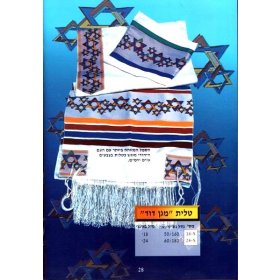 Star of David Prayer Shawl by Talitania$91.16 - $159.13
Star of David Prayer Shawl by Talitania$91.16 - $159.13 -
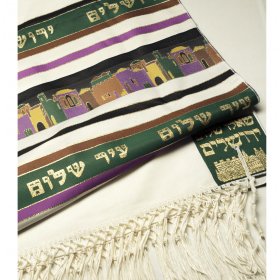 Jerusalem Design in Green Prayer Shawl by TalitaniaChoice of sizes$123.57 - $153.42
Jerusalem Design in Green Prayer Shawl by TalitaniaChoice of sizes$123.57 - $153.42 -
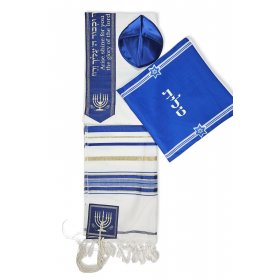 Acrylic Prayer Shawl Set with Menorah and Bible Words, Blue and Gold Stripes – Ateret$44.30
Acrylic Prayer Shawl Set with Menorah and Bible Words, Blue and Gold Stripes – Ateret$44.30 -
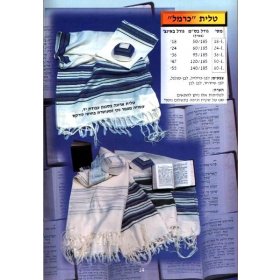 Carmel Prayer Shawl - Talitania$104.26 - $230.86
Carmel Prayer Shawl - Talitania$104.26 - $230.86 -
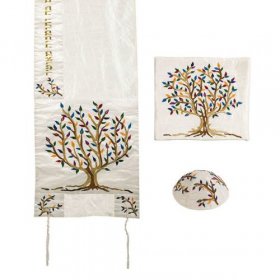 Multicolor Embroidered Polysilk Tree of Life Prayer Shawl Set - Yair EmanuelSize: 16" x 70"$143.37
Multicolor Embroidered Polysilk Tree of Life Prayer Shawl Set - Yair EmanuelSize: 16" x 70"$143.37 -
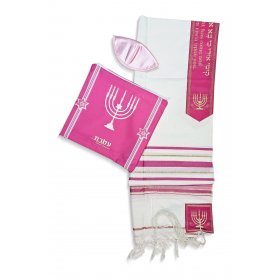 Acrylic Prayer Shawl Set with Menorah and Bible Words, Pink and Gold Stripes – Ateret$44.30
Acrylic Prayer Shawl Set with Menorah and Bible Words, Pink and Gold Stripes – Ateret$44.30 -
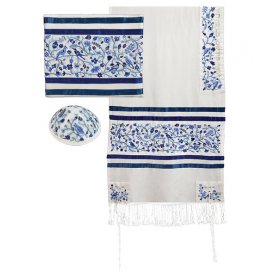 Embroidered Silk & Cotton Prayer Shawl Set Trees and Flowers, Blue - Yair Emanuel20" x 75"$201.64FREE delivery
Embroidered Silk & Cotton Prayer Shawl Set Trees and Flowers, Blue - Yair Emanuel20" x 75"$201.64FREE delivery -
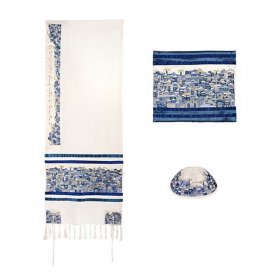 Embroidered Cotton Prayer Shawl Set, Jerusalem in Blue - Yair EmanuelChoice of 2 sizes$227.06 - $433.48FREE delivery
Embroidered Cotton Prayer Shawl Set, Jerusalem in Blue - Yair EmanuelChoice of 2 sizes$227.06 - $433.48FREE delivery -
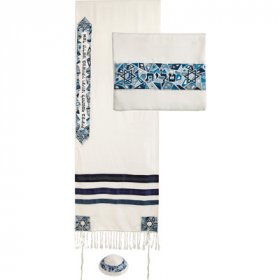 Embroidered Mosaic and Stars of David Prayer Shawl Set Blue - Yair EmanuelComes in 2 Sizes$160.85 - $244.77FREE delivery
Embroidered Mosaic and Stars of David Prayer Shawl Set Blue - Yair EmanuelComes in 2 Sizes$160.85 - $244.77FREE delivery -
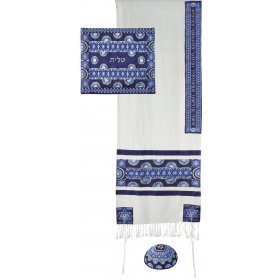 Embroidered Silk and Cotton Prayer Shawl Set, Blue Stars of David - Yair Emanuel20" x 75"$201.64FREE delivery
Embroidered Silk and Cotton Prayer Shawl Set, Blue Stars of David - Yair Emanuel20" x 75"$201.64FREE delivery -
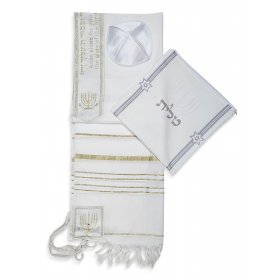 Acrylic Prayer Shawl Set with Menorah and Bible Words, White and Gold Stripes – Ateret$44.30
Acrylic Prayer Shawl Set with Menorah and Bible Words, White and Gold Stripes – Ateret$44.30 -
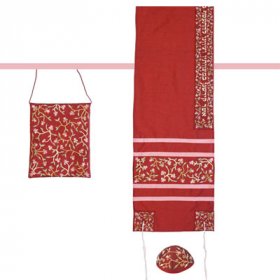 Embroidered Flowers on Polysilk Maroon Tallisack Prayer Shawl Set - Yair Emanuel16" x 70"$141.03
Embroidered Flowers on Polysilk Maroon Tallisack Prayer Shawl Set - Yair Emanuel16" x 70"$141.03 -
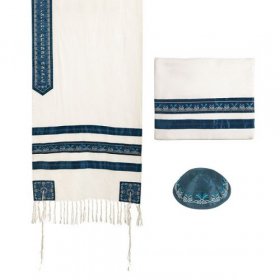 Prayer Shawl with Bag and Cap and Embroidered Decorative Stripes, Blue - Yair EmanuelSize: 20" x 75"$159.68
Prayer Shawl with Bag and Cap and Embroidered Decorative Stripes, Blue - Yair EmanuelSize: 20" x 75"$159.68 -
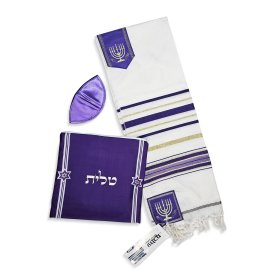 Acrylic Prayer Shawl Set with Menorah and Bible Words, Purple and Gold Stripes – Ateret$44.30
Acrylic Prayer Shawl Set with Menorah and Bible Words, Purple and Gold Stripes – Ateret$44.30 -
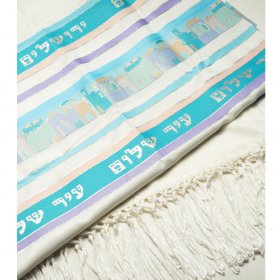 Jerusalem Design Prayer Shawl by Talitania - TurquoiseChoice of sizes$96.75
Jerusalem Design Prayer Shawl by Talitania - TurquoiseChoice of sizes$96.75 -
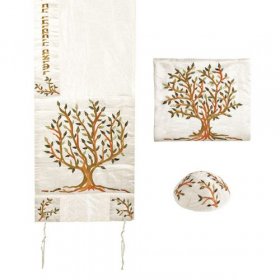 Brown and Green Embroidered Tree of Life Polysilk Prayer Shawl Set - Yair EmanuelSize: 16" x 70"$143.37
Brown and Green Embroidered Tree of Life Polysilk Prayer Shawl Set - Yair EmanuelSize: 16" x 70"$143.37 -
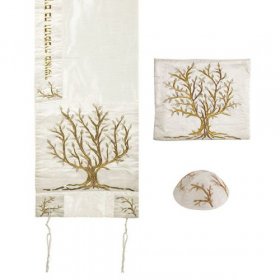 Gold and Silver Polysilk Embroidered Tree of Life Prayer Shawl Set - Yair EmanuelSize: 20" x 75"$143.37
Gold and Silver Polysilk Embroidered Tree of Life Prayer Shawl Set - Yair EmanuelSize: 20" x 75"$143.37 -
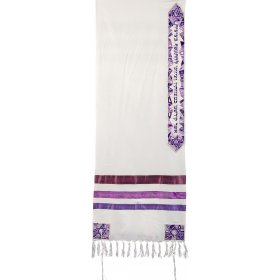 Yair Emanuel Prayer Shawl Set with Purple Mosaic DesignChoice of 2 sizes$160.85 - $244.77FREE delivery
Yair Emanuel Prayer Shawl Set with Purple Mosaic DesignChoice of 2 sizes$160.85 - $244.77FREE delivery -
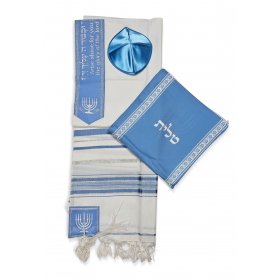 Acrylic Prayer Shawl Set with Menorah and Bible Words, Powder Blue and Silver – Ateret$44.30
Acrylic Prayer Shawl Set with Menorah and Bible Words, Powder Blue and Silver – Ateret$44.30 -
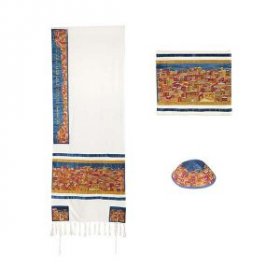 Embroidered Cotton Prayer Shawl Set, Jerusalem in Gold and Red - Yair EmanuelChoice of 2 sizes$247.10 - $361.32FREE delivery
Embroidered Cotton Prayer Shawl Set, Jerusalem in Gold and Red - Yair EmanuelChoice of 2 sizes$247.10 - $361.32FREE delivery -
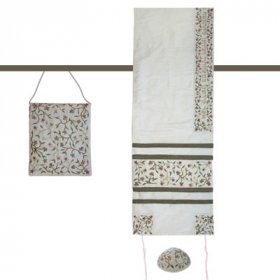 Embroidered Flowers on Polysilk White Tallisack Prayer Shawl Set - Yair Emanuel16" x 70"$141.03
Embroidered Flowers on Polysilk White Tallisack Prayer Shawl Set - Yair Emanuel16" x 70"$141.03 -
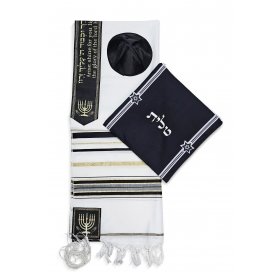 Acrylic Prayer Shawl Set with Menorah and Bible Words, Black and Gold Stripes – Ateret$44.30
Acrylic Prayer Shawl Set with Menorah and Bible Words, Black and Gold Stripes – Ateret$44.30 -
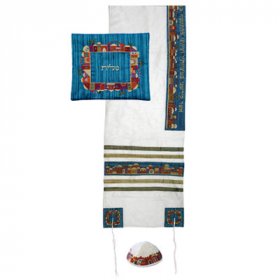 White Polysilk Prayer Shawl Set Embroidered Colorful Jerusalem - Yair Emanuel16" x 70"$141.03
White Polysilk Prayer Shawl Set Embroidered Colorful Jerusalem - Yair Emanuel16" x 70"$141.03 -
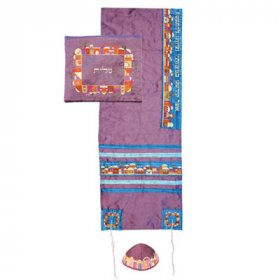 Mauve Polysilk Prayer Shawl Set Embroidered Jerusalem Design - Yair Emanuel16" x 70"$141.03
Mauve Polysilk Prayer Shawl Set Embroidered Jerusalem Design - Yair Emanuel16" x 70"$141.03 -
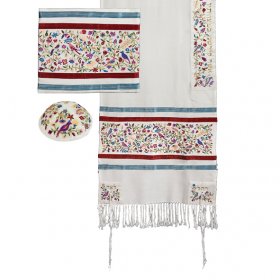 Embroidered Prayer Shawl Set Colorful Birds and Flowers - Yair Emanuel20" x 75"$201.64FREE delivery
Embroidered Prayer Shawl Set Colorful Birds and Flowers - Yair Emanuel20" x 75"$201.64FREE delivery -
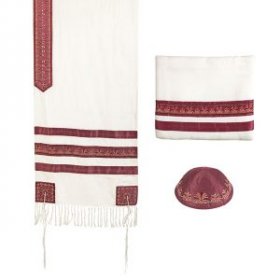 Prayer Shawl, Bag and Kippah with Embroidered Stripes, Maroon - Yair EmanuelSize: 20" x 75"$159.68
Prayer Shawl, Bag and Kippah with Embroidered Stripes, Maroon - Yair EmanuelSize: 20" x 75"$159.68 -
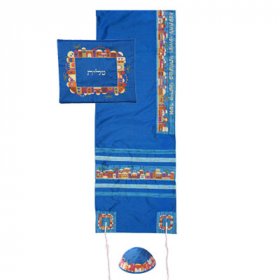 Blue Polysilk Prayer Shawl Set Embroidered Jerusalem Design - Yair Emanuel16" x 70"$141.03
Blue Polysilk Prayer Shawl Set Embroidered Jerusalem Design - Yair Emanuel16" x 70"$141.03 -
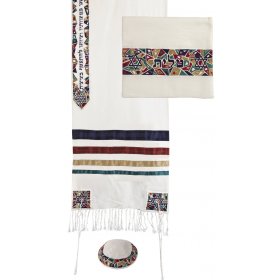 Colorful Embroidered Mosaic Star of David Prayer Shawl Set - Yair EmanuelChoice of 2 sizes$160.85 - $244.77FREE delivery
Colorful Embroidered Mosaic Star of David Prayer Shawl Set - Yair EmanuelChoice of 2 sizes$160.85 - $244.77FREE delivery -
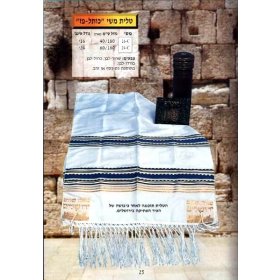 Western Wall Silk Tallit by Talitania - Kotel Paz$67.00 - $74.77
Western Wall Silk Tallit by Talitania - Kotel Paz$67.00 - $74.77 -
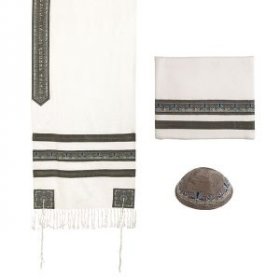 Prayer Shawl Set with Decorative Embroidered Gray Stripes - Yair EmanuelSize: 20" x 75"$159.68
Prayer Shawl Set with Decorative Embroidered Gray Stripes - Yair EmanuelSize: 20" x 75"$159.68 -
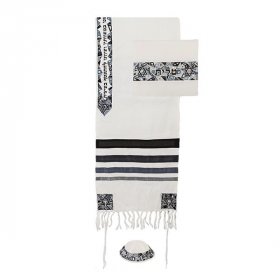 Embroidered Mosaic and Stars of David Prayer Shawl Set Black Gray - Yair Emanuel$160.85 - $244.77FREE delivery
Embroidered Mosaic and Stars of David Prayer Shawl Set Black Gray - Yair Emanuel$160.85 - $244.77FREE delivery -
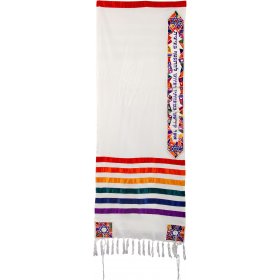 Mosaic Star of David Colorful Prayer Shawl Set - Yair EmanuelChoice of 2 sizes$160.85 - $244.77FREE delivery
Mosaic Star of David Colorful Prayer Shawl Set - Yair EmanuelChoice of 2 sizes$160.85 - $244.77FREE delivery
These Prayer Shawls incorporate Judaic and Israeli themes onto wool, acrylic and silk Tallits, all certified Kosher.
There is much symbolism behind the the classic wool white prayer shawl (tallit) with black stripes. However, despite the symbolism, most Rabbis agree that as long as the shawl is four corners and has tzizit (specially tied fringes) on each of the four corners, the tallit is legitimate for prayer services. Additionally, most orthodox rabbis demand the tallit to be a certain size, specifically large enough to cover most of the man’s body during prayer.
In contemporary Judaism, an individual who is looking to buy a tallit today can be overwhelmed by the tremendous selection. Some people do prefer to wear the traditional black and white or blue and white tallit due to its symbolism of religious purity. Some Zionistic Jews like to wear a white tallit with blue stripes, which symbolizing their love for Israel. In fact, the Israeli flag’s two blue stripes on the white background were copied from the traditional tallit.
However, some people particularly like to stand out and express their individuality. Additionally, there are some people connect to G-d through art, and like to have this art exposed in their tallit. Some people particularly like having their tallit decorated with gold or silver threads symbolizing the royalty they feel when talking to G-d. Other people like a more colorful design reminding them of the colorful cloak given to Joseph by his father Jacob. Some people may choose to wear a silk tallit with special paintings. Other people choose to express their love for Israel by purchasing a tallit with decorations such as the Holy City in Jerusalem.
In addition to individual preferences, each culture has its own unique traditions. For example the Yeminite tallit has a special way of tying the side fringes – with seven joints. In contemporary society, where more people are exposed to cultures other than their own, some people may choose to wear a tallit that was traditional in a different country than their own. Over all, within one synegouge there is more variety today than there ever was before.

